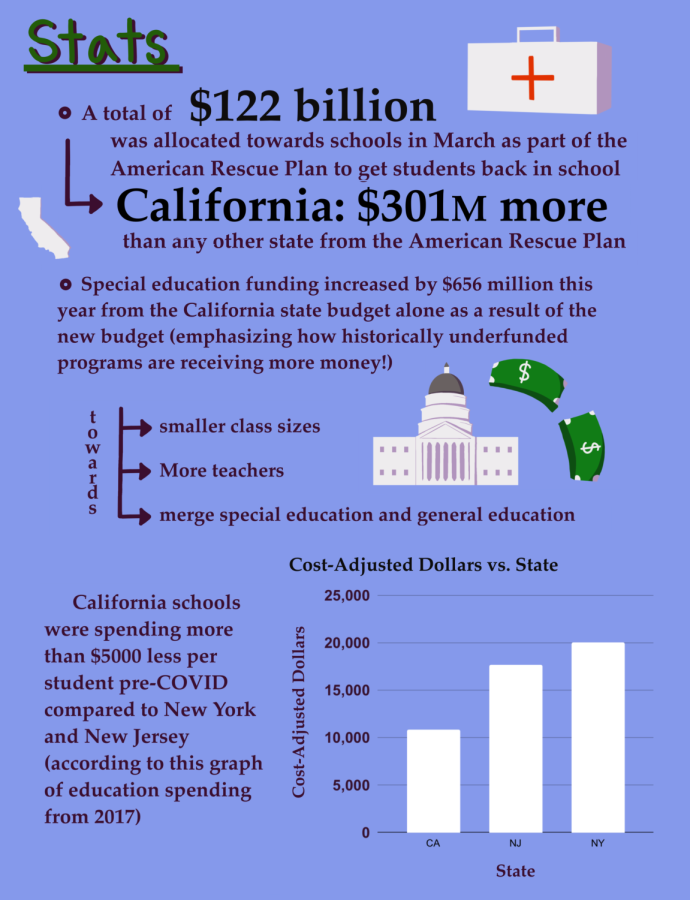California education funding is insufficient
October 27, 2021
For an institution so instrumental in shaping new generations, public education has almost always lacked the support it needs. But after the implementation of the Biden Administration’s American Rescue Plan, funding for public schools has dramatically changed for the better, and it’s important that our country continues fighting for better education funding—especially considering California’s bleak past in education.
Even with the relatively high median income in California, our schools were cut short by about $5,000 per student when compared to districts in New York and New Jersey from 2002-2018. At the start of the pandemic, these shortcomings were further exacerbated and heavily impacted our schools’ budget, as school districts across California experienced a dip in funding as well as quality of learning and lowered attendance across the board. However, the 2021-22 school year has offered us some new light, with our government putting forth new policies that seem to bring new hope to our schools’ coffers to counteract the impacts of the pandemic.
“In March, the Biden administration set aside $122 billion for schools as part of the American Rescue Plan to help students, including those with disabilities, catch up after a year of distance learning,” said Carolyn Jones, a senior reporter for EdSource. “Of the total, California received $301 million more than any other state.”
Historically underfunded programs have been boosted as a result. During a difficult situation with online learning, special education students struggled to receive the attention they needed over mediums like Zoom and Google Classroom. Special Education students often need Instructional Aids to help facilitate their learning in a classroom environment, which was missing during the entirety of the pandemic. However, with the start of this school year, improvements in special education funding aided students in getting the education they deserve, including higher compensation for Special Education teachers, more technology allocations like 1 to 1 chromebooks and increased funding for the department overall.
“We’ve had the ability to get paid for the hourly time that we put in for the IEP documents outside of our contractual time,” Northwood education specialist Jennifer Petrosian said. “We’ve also had the ability to hire staff. We’ve had the allocation to do that, but we have also not been able to find people to hire, due to a shortage in the workforce.”
Despite Northwood’s struggle to hire IAs, 2021 has been an incredible year for education funding as a whole. But there’s still massive improvements to be made, especially in California. It would be heartbreaking to take steps back and take away the opportunities that we have offered students across California.
“All of the adaptive technology for students with IEPS, the ability to access technology, we cannot go backwards on that,” Petrosian said. “If you were to take away the ability to access chromebooks from our kids that don’t have means, you would be putting them in a tough situation. You would be underprivileging them in terms of being able to access their education. There’s only room to go forward.”
In addition to material improvements to access for special education students and personnel, there have also been improvements within the school community. Teachers and students relied on each other during the pandemic, which has now translated into feelings of unity among them.
“I don’t know if we banded together that we would really have had our voices heard before the pandemic,” Petrosian said. “I think that we have found our voice and potentially could become a more unifying force in speaking up for what is necessary for our kids.”
And we must always keep speaking up for student success. Our youth’s education is imperative in creating citizens that help make our world a better place, which is impossible to do without proper funding for education. If 2021 is any indication, it looks like we’re headed in the right direction.


























































